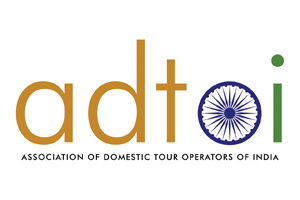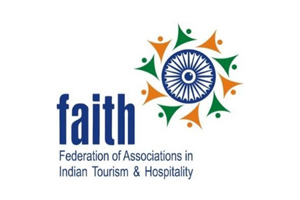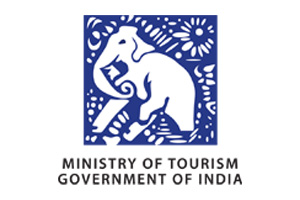The Big Cats of India Safari Tour
23 nights/24 days
Tour of The Big Cats of India Tour
The Bengal Tiger, the Asian Leopard, the Snow Leopard, and the Indian Leopard may all be found in their natural habitat in India, which is a fortunate circumstance. Our Big Cats of India Tour will take you to some of the most breathtaking wildlife sanctuaries in India, including Kibber, Ranthambore, Sasan Gir National Park, and Bera, so you can get up close and personal with some of the world’s most beautiful big cats in their natural habitats.
You will have the opportunity to witness the majestic Lion, the legendary Tiger, the graceful Leopard, and of course, the elusive Snow Leopard as you go from the scrub forests of Gir National Park to the snow-covered vastness of the spellbinding Himalayas. This trip of a lifetime will provide you the opportunity to see some of the rarest and most coveted animals in the planet, and it will have your heart racing for what feels like weeks on end. Make your reservation with Tiger Safari India NOW to see the Big Cats of India.
What you will experience on this tour.
From the best of the Indian wildlife, including the Royal Bengal Tiger, Black Leopard, Snow Leopard, Asiatic Lion, and the Red Panda to premium wildlife lodges, luxury city hotels, experienced naturalists and guides, we cover them all for your must-in-a-lifetime experience of Tiger Safari in India.
Outline Itinerary: The Big Cats of India Tour
- Day 01 : Arrival in New Delhi
- Day 02: New Delhi – Rajkot - Sasan Gir (Flight + 180 Kms/04-hours drive)
- Day 03 - 04: In Sasan Gir National Park
- Day 05: Sasan Gir – Ahmedabad (Drive 330 Kms/ 06-07 hours drive)
- Day 06: Ahmedabad to Bera (Drive 290 Kms/05- hours drive)
- Day 07: Bera
- Day 08: Bera – Jaipur (Drive 390 kms/07- hours drive)
- Day 09: Jaipur – Ranthambhore (Drive 180 kms/03-hours drive)
- Day 10 - 11: Ranthambhore National Park
- Day 12: Ranthambhore – New Delhi (by day train)
- Day 13: New Delhi – Chandigarh – Shimla (Flight + 120 kms/ 03-04 hours drive)
- Day 14: Shimla – Rampur (Drive 130 kms/ 04-05 hours drive)
- Day 15: Rampur – Tabo (Drive/10-12 hours drive)
- Day 16 - 21: Tabo – Kibber
- Day 22: Kibber – Rampur
- Day 23: Rampur - Chandigarh (Drive 425 kms/08-hours drive)
- Day 24: Chandigarh – New Delhi – Onward (Flight)

Detailed Itinerary for the Big Cats of India Tour
Day 01 : Arrival in New Delhi
Our agent will meet you at the New Delhi airport, transfer you to your hotel, assist you with the check-in process, and give over any travel-related paperwork as he briefs you on your next tour. Stay the night at the hotel in New Delhi.
The Roseate House, Aerocity or similar accommodations
Day 02: New Delhi-Rajkot-Sasan Gir (Flight + 180 Kms/04-hour drive)
After breakfast, transfer to the airport for a 5:15 a.m. flight to Rajkot, arriving at 7:00 a.m. Meet our driver at the airport and travel to Sasan Gir (180 kilometers/four hours). Check in upon arrival at the lodge. Lunch at the lodge followed by an afternoon lion safari in the national park by jeep. In the lodge for dinner and overnight accommodations.
The Fern Gir Forest Resort or a similar establishment
Day 03 - 04: In Sasan Gir National Park
National Park jeep lion safari in the morning and afternoon. Breakfast and lunch are offered at the Lodge.
With a population of about 600, Gir is the only habitat in India for the Asiatic Lion. The Gir National Park is located on the peninsula of Gujarat in South-Western India. The landscape is harsh, with low hills, and the vegetation is mixed deciduous, with stands of Teak, Acacia, Jamun, Tendu, and Dhak trees interspersed with vast grasslands. The trees on the hills are few and short-lived. Within the sanctuary are various human communities inhabited by cattle herders known as Maldharis with an estimated 20,000 heads of livestock (which, incidentally, constitutes a substantial portion of the Lion’s food). At Tulsi Shyam and Kankai Mata, there are other Hindu pilgrimage sites and sulphur springs. On the park’s outskirts, a large population of Indian gazelles is safeguarded by the religious beliefs of the local populace. In the lodge for dinner and overnight accommodations.
In Gujarat’s Saurashtra district, Gir National Park and Sanctuary protects a 1412-square-kilometer area including the country’s largest contiguous stretch of dry deciduous forest. Gir has evolved to host a remarkably stable ecosystem with remarkable regenerative, self-supporting, and self-sustaining capability due to its rich biodiversity: 606 plant species, 39 mammal species, 37 reptile species, over 300 bird species, and over 2,000 insect species.
Gir is a breeding area for migrating birds, and its avifauna includes several raptors and other notable species, such as the Lesser Florican, Osprey, Indian Pitta, Red-headed Vulture, etc. It is also home to a variety of reptiles, such as the Indian python and the Indian star tortoise, as well as one of the country’s largest Marsh crocodile populations. Gir also has one of the highest leopard densities in India. With approximately 400 leopards inhabiting the park, it’s also an excellent site to observe these animals. In the lodge for dinner and overnight accommodations.
The Fern Gir Forest Resort or a similar establishment



Day 05: Sasan Gir – Ahmedabad (Drive 330 Kms/06-07 hours drive)
After a morning jeep safari in the national park and breakfast, drive (330 km/6-7 hours) to Ahmedabad. Upon arriving, register at the hotel. Stay the night at the hotel in Ahmedabad.
The hotel is the Comfort Inn Sunset.
Day 06: Ahmedabad to Bera (Drive 290 Kms/05-hour drive)
After an early breakfast, drive through the countryside en route to Bera (290 km, 5 hours). Check in upon arrival at the lodge.
Bera, Rajasthan is situated in close proximity to the Jawai Dam. It is renowned for its stunning leopard sightings. This is a unique experience because it is not a forest; instead, leopards can be seen near and around this beach settlement.
Bera is home to a variety of mammals and birds, and attracts wildlife enthusiasts from all over to view the elusive Leopard, the powerful Bluebull, the Mugger Crocodile, the ever-mischievous Hyena, the graceful Pelican, the Greylag Goose, Robin Accentor, Demoiselle Crane, and the Bar-headed Goose, to name a few. Indulge in a late-evening leopard safari while traversing leopard-inhabited pathways. Hotel dinner and overnight stay
Jawai Leopard Safari Lodge or a comparable hotel
Day 08: Bera – Jaipur (Drive 390 kms/07-hour drive)
After breakfast, transfer to Jaipur and check into the hotel upon arrival. The remainder of the day is yours to relax.
Jaipur, the capital of Rajasthan, is painted pink, the hue associated with Rajput hospitality. This city of fairytale mansions, fortifications located atop rocky hills, and spacious avenues is incredibly gorgeous. Jaipur, the first planned city of its era, is surrounded by a magnificent wall that was impregnable to the several attackers that besieged the land. Stay the night in Jaipur.
The Oberoi Rajvilas or comparable Hotel




Day 09: Jaipur – Ranthambhore (180 kms, 03-hours drive)
After breakfast, drive 180 kilometres (3 hours) to Ranthambhore. Check in upon arrival at the lodge. After lunch, leave for an afternoon jeeptiger safari. Dinner and overnight accommodations at the Lodge.
Hotel: Oberoi Vanyavilas or comparable
Day 10–11: Ranthambore National Park
The park offers morning and afternoon jeep tiger safaris. Meals served at the lodge. Overnight at the Ranthambore hotel.
This park’s name is derived from the thousand-year-old stronghold perched on a hill above the forest. Ranthambore spans an area of 400 square kilometres containing rugged hill crests that fall into wide valleys between the Aravalli and Vindhya mountain ranges. Ranthambore, renowned for the daytime activity of tigers, is a unique place where the natural present meets the historical past. In these regions, sambar, cheetal, chinkara, nilgai, and langur predominate. This area is home to the elusive leopard and tiger, and travellers have a very excellent chance of spotting tigers up close during safaris.
Additionally, more than 300 kinds of birds can be observed in Ranthambore. In reality, Ranthambore and its environs are a paradise for bird watchers. The Great Cormorant, the Painted Spurfowl, the Sarus Crane, the Bronzed Winged Jacana, Sandpipers, Kingfishers, Nightjars, the Painted Sandgrouse, the Indian Eagle Owl, and many other winter migrants from their breeding grounds north of the Himalayas are interesting permanent bird species.
These decaying remnants of past greatness, whether chatris or cupolas resembling palaces or old guard stations, enhance the mystical and ethereal feel of this expansive wilderness.
Hotel: Oberoi Vanyavilas or comparable




Day 12: Ranthambore–New Delhi (by day train)
Morning tiger safaris in the national park of Ranthambore and breakfast at the lodge. After lunch or with a packed lunch, transfer to the Sawai Madhopur train station to take the 12:30 p.m. 1stA/C Sleeper class day train to New Delhi. At 18:45, arrive at Hazrat Nizamuddin station and transfer to your New Delhi hotel or the international airport to board your journey home.
The Roseate House, Aerocity or similar accommodations
Day 13: New Delhi – Chandigarh – Shimla (Flight + 120 kms/03–4 hours drive)
After breakfast, transfer to the airport to join the 11:15 hrs flight to Chandigarh, which arrives at 12:10 hrs. After being met by our representative at the airport, you will depart for Shimla. Upon arriving, register at the hotel. The evening is open for recreational pursuits. Stay the night at the hotel in Shimla.
Woodville Palace serves as lodging
Day 14: Shimla – Rampur (Drive 130 kms/ 04-05 hours drive)
Following a leisurely breakfast, head to Rampur. In Rampur, stay at the Nau Nabh Heritage hotel. Rampur is located at a height of 1200 metres above sea level. The hotel has a double occupancy policy.
Accommodation: Nau Nabh Heritage
Day 15: Rampur – Tabo (Drive/10–12 hours drive)
At 7 AM, we leave Rampur with a packed breakfast and drive to Tabo, which is located at an elevation of 10,500 feet. This stop is necessary for habituating guests. We will stop halfway through for lunch. The homestay will be spotless and functioning. Guests stay in rooms with double occupancy. Depending on the weather and road conditions, the trip takes 10 to 12 hours.
The accommodation offered in Homestay
Day 16 to Day 21: Tabo – Kibber
We will visit the Tabo monastery the following morning before making our journey to Kibber. Kibber’s elevation is 4,500 metres If there are any snow leopard sightings during the two-hour journey to Kibber, we will drop you down and have your cameras ready. The porter and guide will come to assist you, but it is best to ascend, acclimatise, and then return, as weariness can lead to altitude sickness. Depending on how difficult it is to reach the sighting place, we will then take a call.
After settling into your rooms at the Kibber homestay, you can take a brief stroll about the hamlet to become acquainted. If there are any sightings in the afternoon, we will transport you to the location as soon as we get the news. We employ a Maruti Suzuki Gypsy so that our guests may reach the location without having to walk. One may be required to trek between 100 and 400 yards at various times while navigating to the snow leopard’s habitat. There are also Yaks available for those who are comfortable riding them.
Typically, the daily schedule is as follows: Morning tea/coffee is served at 6:30 AM, and breakfast must be ready by 7:15 AM. The spotters convene at 7:15 a.m. for a meeting and then depart for the snow leopard sighting locations. After breakfast, tourists are able to observe Blue Sheep, Red Fox, and Ibex. We recommend everyone to remain close to the homestay until they hear word of an excellent snow leopard sighting, after which they may pursue other local wildlife. Typically, lunch is served at the snow leopard sighting location.
If there are no sightings on certain days, we will return to our accommodation for lunch. Always served for dinner at the homestay. Tea, coffee, and snacks are offered between meals at both the site and the guesthouse. Free mineral water is offered throughout the journey. Each room features a wood-burning stove and an electric heater. There is an electric blanket on each bed. Heavy blankets are also provided. There are also provided bath towels. A generator is available in case the power goes out.
In winter, there is no flowing water. Daily hot water will be given for personal hygiene. There is a dry toilet present. Toilet paper and wet wipes will be provided. If someone wishes to take a bath, hot water will be provided in the separate bathroom. There is a porter accessible for each guest. You are not required to lift anything during your stay. The porter will handle your camera as well as your daytime camera bag or backpack. The presence of additional scanner guides maximises the likelihood of rapid and confirmed observations.
You will be given a walking stick and a chair or stool to use while seated for photographs. A tent is also erected for those who need to lie down. Inside the tent are stored insulated mats. Additionally, an oxygen tank is transported with the group to the sighting location. A gadget for measuring oxygen saturation is available for diagnosing shortness of breath. The escort will direct you and be present to assist with any problems that may arise. In the event that a guest has mountain sickness or shortness of breath, there is a plan in place to lower their altitude. There may be a detour of up to 30 kilometres for new or alternative Snow Leopard viewing locations. The volunteers will provide any additional assistance or make any more journeys necessary to transport equipment and other necessities from the guesthouse to the construction site.
This is the routine for the next week.
The accommodation offered in Homestay




Day 22: Kibber – Rampur
Kibber’s early morning departure for Rampur. Check at the Nau Nabh Heritage hotel.
Accommodation: Nau Nabh Heritage
Day 23: Rampur-Chandigarh (Drive 425 kms/08-hour drive)
Kibber’s early morning departure for Rampur. Check at the Nau Nabh Heritage hotel.
Accommodation: Nau Nabh Heritage
Day 24: Chandigarh – New Delhi – Onward (Flight)
After a leisurely breakfast, you will be transferred to the Chandigarh airport to join a 12:45 p.m. flight to New Delhi, which will arrive at 13:55 p.m. Afterwards, you may board a trip back home or to another location.
IMPORTANT
In order to prevent acute mountain sickness, it is necessary to take Diamox 250 mg twice daily three days prior to the journey and three days into the trip. If you have any medical concerns, please see your physician before using this medication. In 48 hours, one will swiftly ascend in altitude, necessitating this precaution.
Trusted by
Get a Quote
Reach Us!
Let’s plan your tiger safari tour in India. You can use the query form at the bottom of the page or use the following to connect us.
Phone
Request Callback
What you will experience on this tour.
From the best of the Indian wildlife, including the Royal Bengal Tiger, Black Leopard, Snow Leopard, Asiatic Lion, and the Red Panda to premium wildlife lodges, luxury city hotels, experienced naturalists and guides, we cover them all for your must-in-a-lifetime experience of Tiger Safari in India.
Tour Inclusions
- Bed and breakfast accommodations are available in New Delhi and Agra.
- Accommodations include all meals and a safari in Pench, Kanha, and Bandhavgarh.
- Your Pench, Kanha, and Bandhavgarh admission and guide fees.
- Your entry fee and any tour guide fees for visiting monuments.
- There will be 6 exclusive jeep safaris offered in Pench.
- In Kanha, 5 exclusive jeep safaris will be offered.
- In Bandhavgarh, there will be 7 exclusive jeep safaris available.
- Assistance at the hotels and the airport.
- Every land transfer is done in a cool Toyota Innova or Crysta.
- Any taxes that are now applied.
Tour Exclusions
- Both domestic and international plane travel.
- Personal expenses like tips, cigarettes, alcohol, laundry, and phone calls.
- In national parks and monuments, there is a still and video camera fee.
- Travel Insurance
- Everything that isn't listed among the inclusions.
Enquire this tour
Other Wildlife Safari Tours in India to choose from
Pench National Park is in southern Madhya Pradesh. 60% of the National Park’s trees are teak, with the remaining 40% being mixed woodland.Collarwali, a tiger who gave birth to 29 pups, brought the…









